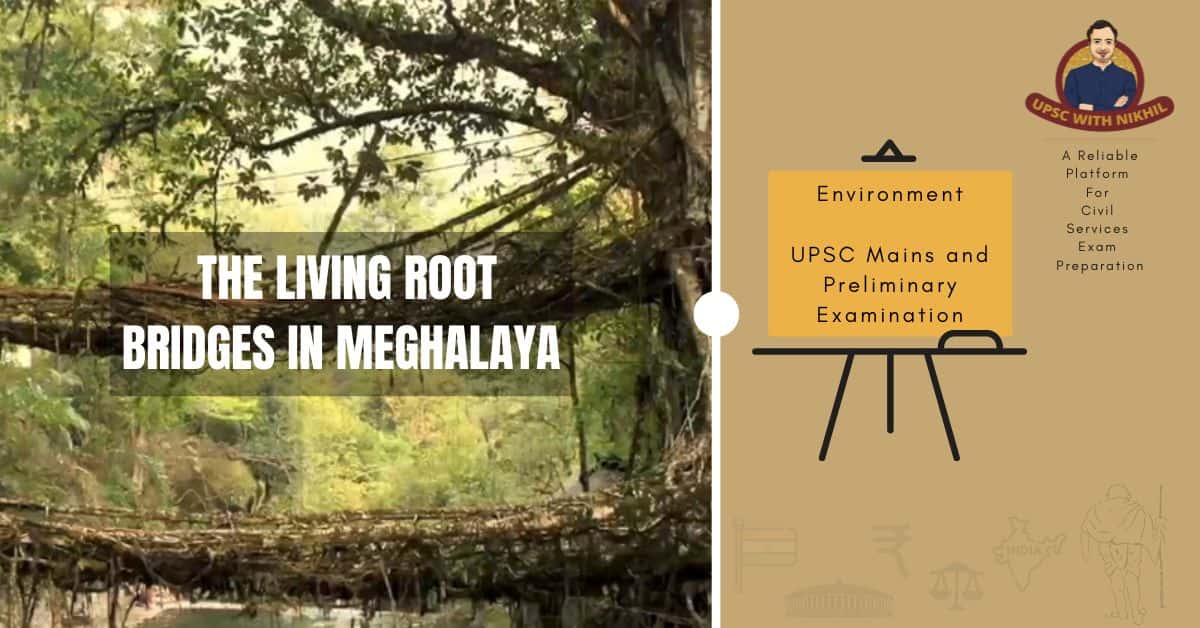The Living Root Bridges In Meghalaya
Introduction
The Ever-Expanding Meghalaya's Living Root Bridges: A Natural Wonder of the Northeast. Many people consider bridges to be among the best things that humans have ever made. But Meghalaya's Living Root Bridges are a breathtaking example of a natural wonder. These magnificent structures, which are among Meghalaya's top tourist attractions, have been carefully developed over decades.
The ever-evolving Meghalaya bridges are constructed of tangled, thick roots that give the structure fortitude and enable it to support 50 or more people at once. The skilled Khasi and Jaintia tribes that have perfected the knack of producing root bridges across elevated banks of streams passing through the deep forests of Meghalaya are the ones that grow them.
Living Root Bridges: Facts And History
Around two centuries ago (180 years specifically), veterans of the Khasi clan who lived in Meghalaya planted rubber tree roots within hollow areca nut palm canes that met halfway across a stream. This was how the concept of living bridges in Meghalaya came to be. The roots were properly fed and cared for until they expanded to the point where they could reach the opposing bank, intertwine entirely, and become strong enough to support great weight. Several intriguing details concerning these bridges include:
• The roots of the Ficus elastica tree, popularly known as the rubber tree, are used to create the Living Root Bridges.
• It takes 10 to 15 years to perfect the shape of some of the root bridges, some of which are over 100 feet long.
• Once completely developed, these roots can persist for 500 years. Due to their ongoing contact with water, some roots begin to rot, but others sprout to replace them, giving the bridge the necessary support.
• Of all the Living Root Bridges in Meghalaya, the double-decker root bridge in Cherrapunji and the single-decker root bridge in Shillong are the unique bridges in the world and make for prime attraction in the Northeast.
• UNESCO has designated Meghalaya's Living Root Bridges as a World Heritage Site.
Location of Living Root Bridges:
There are Living Root Bridges in the Meghalayan regions of West Jaintia Hills, East Khasi Hills, and a few other regions in India that attracts more tourists. However, Cherrapunji and Shillong are home to the most of the top root bridges. Here is how to get to these stunning locations. These two towns are both reachable from Guwahati. Cherrapunji's double-decker Living Root Bridge The longest known Living Root Bridge, measuring 30 meters in length, is 2400 feet high, which also means that getting to it requires a 2400 foot fall. Despite this, the route from Cherrapunji to Umshiang Root Bridge is one of the hardest treks and calls for a lot of tenacity and toughness. There are proposals to build another level onto the reputedly 180-year-old bridge.
Cherrapunji, located 56 kilometers from Shillong and regarded as one of the world's most stunning and beautiful locations, is a must-see location in Meghalaya. Numerous waterfalls, foggy surroundings, a pleasant climate all year round, and lush vegetation are some of the top draws for visitors from around the world who travel to this tranquil refuge in Northeast India. Shillong's single-decker Living Root Bridge Trekking a path that departs from the village of Riwai will bring you to the single decker root bridge. This small community is located to Mawlynnong, a picturesque paradise that gained notoriety in 2003 after being named Asia's Cleanest Village by the Discover India magazine.
Shillong is roughly a 3-hour drive from Mawlynnong, which is near to the Bangladesh border. Visit this location to take in the magnificent view of the natural balancing rock, one of Mawlynnong's top attractions. In fact, there are a lot of fascinating sites to see and things to do in this area, in addition to some welcoming homestays. Take a trip and find out for yourself.


